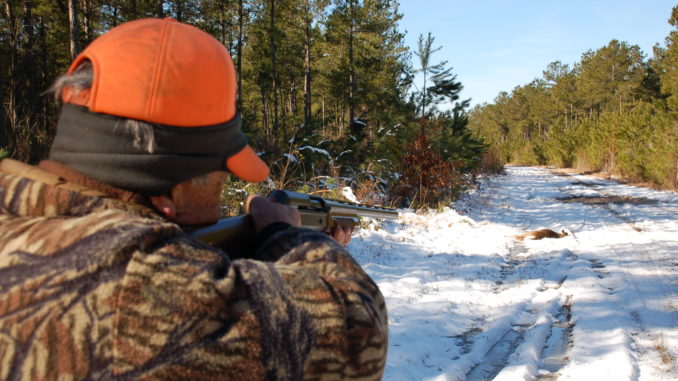
Carolina hunters experience strange weather patterns
Unlike deer hunters in Canada or south Texas, hunters in the Carolinas have to prepare for both ends of the weather spectrum. It is not uncommon to get 80-degree highs for a few days and snow flurries a few days later. Deer in this environment have adapted to quick condition changes. But frigid temperatures occur occasionally, and deer will respond predictably.
Deer are much like people. When it’s 25 degrees outside and the ground is covered by thick frost, that warm bed feels too good to get out and frolic around. Hunters can count on most deer to delay their normal routines until the temperatures rise enough to burn off the heavy frost.
Extremely cold weather marks happy time for Rick Grubbs of South Carolina’s Waccamaw Hunting Services.
“When it is frigid cold, I love it, love it, love it,” he said. “Deer postpone early movements and will feed later in the day.”
Brutally cold weather shortens the time for deer to feed
Temperatures well below freezing ensure deer will stay bedded longer than usual. This normally eliminates extended nighttime feeds. In a practical sense, the cold weather bookmarks major activity from mid-morning until a couple of hours after sundown. As a plus, hunters can avoid spooking deer walking into their stands because deer are usually huddled in their bedding areas.
“Deer are more active when the sun peaks out and warms everything up,” Grubbs said.
A cold, November day is an ideal time to stay on stand all day. That’s because from the time the sun melts off the frost to the last few minutes at dusk, deer will be on the move trying to fill up on energy rich groceries. This is when the time Grubbs invests in planting food plots pays off.
“When it gets bitter cold here, a major food source is the biggest magnet. Deer gravitate to high energy food sources,” said Grubbs. He has more than 100 of his 5,000 acres planted in food plots.
“(There’s) no place I would rather be than overlooking one of our oat and turnip food plots when it gets real cold,” he said.




Be the first to comment